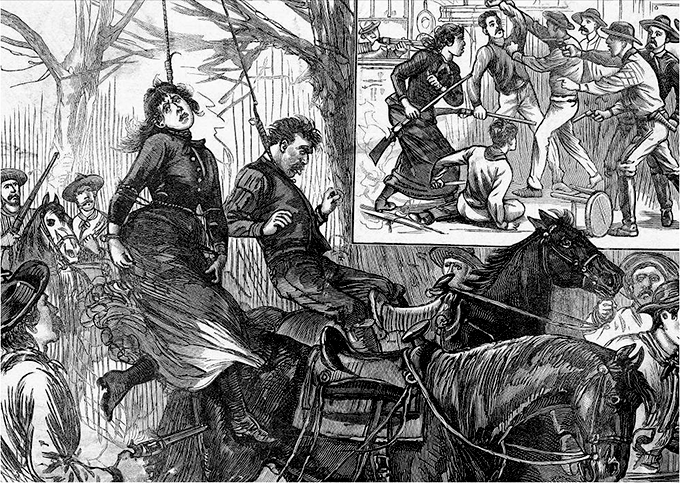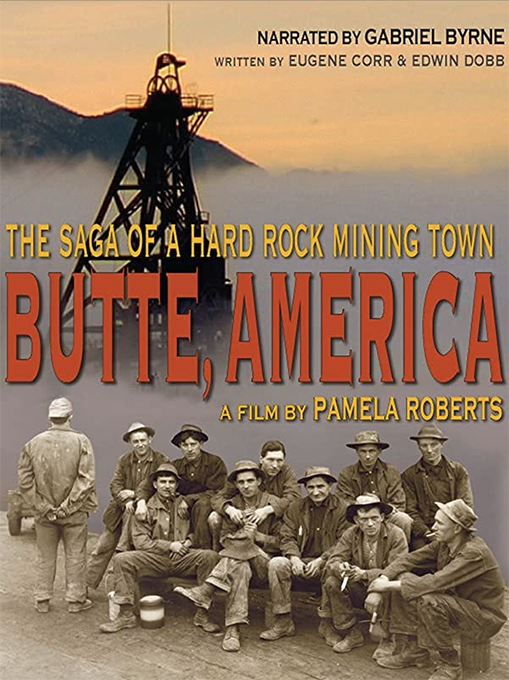tv “Yellowstone” Is a Conservative Texas Rewriting of the American West – And Also Great Television
I wrote a political opinion piece on the hit TV series “Yellowstone” for the newspapers, (see below,) and then “1923,” the sequel to “Yellowstone” debuted, and so here we go, HOT GLOBE™ high-tails it into the tremulous world of movie criticism.
OK, first episode of “1923.” Wow. Age 77, Helen Mirren as Cara Dutton slaughters some immigrant sheep herder with a double-barreled shotgun. Cut to Kenya. A Dutton progenitor fires what I guess is an elephant gun at a charging lion which in death falls upon him. Things do not slow down. Back to the Yellowstone. The stalwart cattlemen heroes led by Harrison Ford tell the immigrant sheepherders to get their stinking, close-cropping sheep off the cattlemen’s leased and drought-stricken land.
It’s “The Sheep Wars,” which I’d never heard of, so I did a little digging, since I was born in Billings, Montana, along the Yellowstone River, myself, as was my father, in 1893, and my grandfather was the mayor in 1882, with Liver-Eating Johnson (recall the Redford movie?) his sheriff, and Calamity Jane helping out during outbreaks of tuberculosis. (When you read about Montana in the East Coast or LA press, you are following someone who wouldn’t know a quarter-horse from a wombat. See my Harper Collins NYT Notable, Kayaking the Full Moon.)
First, there were no sheep wars along the Yellowstone, to speak of.
In Montana, the real money was in copper and gold mining. It still is, along with software. However, I discovered “The Sheep Wars,” were very much real, just more of a Texas, Wyoming, Arizona thing, and they happened long before 1923, more like the 1870’s to about 1909. Native herders were beheaded, ISIS-style. Tens of thousands of sheep were driven over cliffs. Lots of people got shot, mostly by the Harrison Ford side. Interestingly, the sheep owners were often not small-potatoes immigrants, at all. Sheep ranchers lost tens of thousands of dollars, worth millions now, in these depredations by masked cattlemen killers. The fights came to an end in Big Horn County, Wyoming, where to the surprise of all, sheriffs arrested a group of murderers, and they were sent to jail. Resource wars. Now we just invade other countries for their oil.
Up in Montana, along the Yellowstone River, it was homesteaders vs. the ranchers. The early ranchers made their money grazing on the open range left after 30 million bison had been slaughtered in order to starve out the plains Indians and force them onto reservations. Homesteaders under federal law were allotted some 160 acres, which they fenced in. In their war upon immigrant farmers, not sheep ranchers, the members of the Cheyenne Cattleman’s Club in Wyoming proceeded one drunken night to hang a woman sodbuster and started out to gun down families. But in Montana, the farmers and miners stopped Ford’s killer crew, who simply did a My Lai on any small farmer they could find. That’s why until recently—that is until Donald Trump and “Yellowstone” came along, Montana was as different from Wyoming as Vermont is from New Hampshire.
Wyoming Cattle Barons Hang Their First Woman Homesteader
Caveat: the sequences in “1923” in the “Indian Schools,” from my knowledge, are harrowing and all too true. Director Taylor Sheridan’s earlier feature “Wind River” is one of the strongest movies ever made about racism and rape.
“Yellowstone” is superbly written, filmed and acted television, great entertainment for those who have never heard of it since, alas, they are too busy binge-watching “White Lotus” (also great television) and it celebrates some true non-Trumpy conservative values like hard-work and patriotism. The Ankler.
But it’s not Montana.
There’s some brilliant borrowing, “The Ghost and the Darkness”, “Heaven’s Gate”; “Legends of the Fall”, “Dances with Wolves”, “Leopard George”, a whiff of the “Snows of Kilimanjaro”—the best stuff ever, even “Heaven’s Gate” which is worth a rewatch of the director’s cut–and some others I’m not filmic enough to whiff out.
But face it HOT GLOBE™ historians, who’s going to watch a series about the real “Yellowstone” of 1883-2023? Unarmed copper miners fighting Pinkerton goons and Boston banks? I mean, where’s the fantasy in that? That’s real life. Some complain about all the gun violence in the series but, hey, Manhattan and Santa Monica, it’s fun to wear a pistol on your hip and pling away with a Glock at the target range even if—
and this is extremely difficult for American viewers to wrap their heads around, but nobody ever carried guns in the old West except maybe way down in Texas, and is Texas the West? Really? Bang-bang is all dime-novels, ‘50’s western reels, John Wayne, the “Hateful Eight”, ad nauseam.
My father had an original 1911 model Colt .45 from his days in WWI and we had a Sharp’s rifle from earlier buffalo massacres hanging in the library, so one time I asked my dad if people wore pistols on their hips like in all the tv shows and movies.
“No, of course not. Once in a while if someone was riding across open prairie he might take a long gun for snakes, but pistols in those days were too inaccurate.” My father never saw anybody wearing a pistol, he said. He was born in 1893, which would have made him 30 years old when the pistol-packing Duttons, Harrison and Helen came along.
The day Hollywood makes Westerns without guns will be the same day they shoot the movie about miners fighting for better wages. Where’s the romance in that? Ain’t gonna happen.
Why would anyone care what version of the past gets told when it’s told this brilliantly? Because it determines how people, in this case the viewers, see the future.
It is a conservative phenomenon I call “Texification.” It’s the Marlboro Man version of the West, and in the case of the real Montana, it’s turning my home state Red from Purple. Is it possible that if Democrats don’t turn off “White Lotus” and check out what most of America is watching on Sunday nights, they may get Trumped once again as they were with The Apprentice?
Here’s the op-ed:
Montana now has two Republican members of Congress with Ryan Zinke and Matt Rosendale winning last month, doubling its representation (while Rhode Island will drop to one.) The state used to vote Purple, with two Democratic governors and a Democratic Senator for eight years, until 2020. Then along came “Yellowstone,” the television series. The Ankler.
A tremendous Red Wave swept Montana in 2020, with 100,000 new voters, a lot in a state with a little over a million residents. This was the Trump Bump. The only Montana candidate that Red Wave didn’t drown was the ever-foxy-four-fingered-farmer-of-the-people, Sen. John Tester, of Big Sandy, who actually cleaned Donald Trump’s clock. (How and why is another story.)
But in Montana and less-reported parts of the West, the 2020 Red Wave is accelerating, the 2022 midterms notwithstanding. Democrats best take notice. I refer coastal elites to the offering most snubbed by Emmy voters this year, the most popular show, in fact, on American television today, “Yellowstone.”
“Yellowstone” has rocked the vote in the Treasure state and far beyond, not unlike “The Apprentice,” that bit of slick reality TV which made Donald Trump possible in the first place.
“Yellowstone,” of course, plays like “Succession” meets “Dallas,” all about billionaires and governors (Kevin Costner) in cowboy hats and angry women (Caroline Warner) in low-cut buckskin dresses who throw glasses of Bourbon at log mansion windows, which is not to denigrate its creator, the immensely talented Texan, Taylor Sheridan, who also wrote “Hell or High Water” with Jeff Bridges and “Wind River.” Still, old Montanans like me scratch our heads. The series’ prequels, such as “1883” have nothing to do with Montana and everything to do with Ft. Worth, Comanche warriors and endless gunfights. Which may be true, for Texas. I don’t know much about primitive cultures. But by 1883, the railroad already stretched across Montana, all the way to Seattle. Why would anyone travel by wagon train as in “1883”?
“Yellowstone” owes its political success to its re-writing of Western history in a romantically conservative fashion. You won’t see union copper miners striking in Butte or Montana farmers battling ranchers with rifles until the cattlemen, who supported open grazing against homesteaders’ fences, were put down and stopped by the Montana legislature. That was “Heaven’s Gate”, Michael Cimino’s long (way, way long) yet basically accurate magnum opus treatment of Wyoming’s Johnson County cattle wars. No, “Yellowstone” is the Marlboro Man West, not the forgotten labor/farmer West, and certainly not the new Sierra Club West.
It’s a new media phenomenon I call “Texification.”
Montana was always a more civil place. For example, back when Mike Mansfield, a former copper miner, was Senator, (and the longest serving Senate Majority leader,) everybody talked to everybody pretty much. I remember my parents writing Mansfield about Vietnam, “Dear Mike: We don’t think this war is good for our boys,” and a week later Mansfield wrote back, “Dear Dorothy and Harry, I agree,” and then my father would lunch with Rep. Jim Batten, who nominated Barry Goldwater for President. Those days are long gone.
Folks are moving to Montana in the belief, or hope, that it is the conservative refuge of mostly white freedom portrayed by “Yellowstone.” Forget about real Montana Indians, by the way, who comprise about 7% of the population. The new Republican legislature recently tried to make it harder for them to vote, only to be brushed back by a judge who laughed at the unconstitutionality of the move which, in addition, would have limited the votes of college students. College towns and Indian reservations tend to vote Democratic across America. Maybe on the res they’re watching Sterlin Harjo’s critically acclaimed “Reservation Dogs,” not “Yellowstone?”
Ironically, even Montana has become a symbol of the nation’s culture wars. Democrats everywhere best take notice, though. To ignore popular television is to be Tex-ified. It’s happened before.
.
HOT GLOBE™ the column on Politics and Climate Change by Steve Chapple on Substack
ABOUT THE AUTHOR
Steve Chapple
Visiting Scholar, Climate, Atmospheric Science and Physical Oceanography Scripps Institution of Oceanography Exec, Director San Diego Unified STEAM Leadership Series. Read more of his work at: https://hotglobe.substack.com/embed



Spread the word